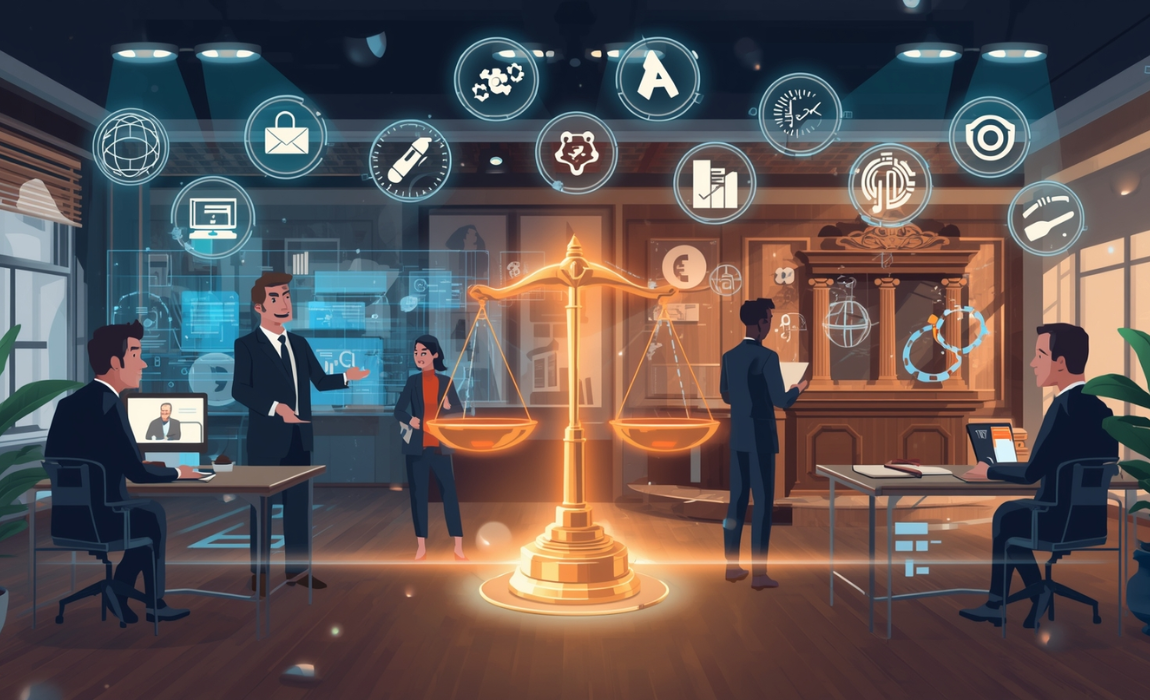
Introduction
Technology today is not just a tool—it is a transformative force reshaping how societies govern, interact, and resolve disputes. From artificial intelligence (AI) and blockchain to biometric surveillance and digital platforms, the law now finds itself constantly racing to keep pace with innovation. The intersection of law and technology, once peripheral, has become the very battleground where rights, responsibilities, and power are negotiated. The central question is whether law can evolve fast enough to harness the promise of technology while safeguarding fundamental values.
Emerging Trends: Law in a Digital Ecosystem
One of the most significant trends is the digitisation of legal processes. Courts are increasingly embracing e-filing, video hearings, and digital evidence management.
These reforms reduce delays, lower costs, and expand access, particularly for citizens in remote areas. Technology has also empowered regulatory agencies, enabling them to monitor compliance in real time, whether in corporate governance or environmental law.
Beyond courtrooms, technological advances are reshaping substantive areas of law. Cybercrime and data protection dominate legislative agendas across the world. The European Union’s General Data Protection Regulation (GDPR) and India’s recently enacted Digital Personal Data Protection Act are emblematic of how privacy is emerging as the new frontier of rights. Intellectual property law, too, is grappling with questions around ownership of AI generated works, while contract law faces challenges from blockchain-enabled “smart contracts” that execute themselves without human oversight.
Challenges: When Law Lags Behind Technology
The rapid speed of innovation, however, often leaves law playing catch-up. Consider artificial intelligence in predictive policing: while it promises efficiency, it also risks reinforcing systemic biases. Facial recognition technology has been deployed in many cities without adequate safeguards, raising fears of mass surveillance and violation of the right to privacy. Similarly, cryptocurrencies have sparked both economic opportunity and regulatory uncertainty, exposing gaps in existing financial laws.
A deeper challenge lies in jurisdiction. Technology is borderless, but law remains bound by territory. A defamatory post on social media, a cyber-attack launched from overseas, or a data breach involving multiple countries forces courts to wrestle with the limits of sovereignty. The absence of harmonised global legal frameworks makes enforcement fragmented and inconsistent.
Constitutional Values Under Pressure
Technology is not neutral—it encodes choices, often privileging efficiency over equity. When governments use digital tools for governance, constitutional safeguards must not be sidelined. Automated decision-making in welfare schemes, for instance, has led to wrongful exclusions, disproportionately affecting vulnerable communities. The risk is that technological governance may erode accountability and human dignity, values the law is meant to protect.
Freedom of speech also faces new strains in the digital era. Social media platforms wield enormous power to amplify or silence voices, often without transparent standards. Courts are increasingly called upon to balance the constitutional guarantee of free expression with concerns of misinformation, hate speech, and public order. The challenge is to ensure that regulation does not slide into censorship.
The Way Forward
Navigating the law-technology intersection requires a multi-pronged approach. First, legal frameworks must become more anticipatory than reactive, engaging with innovation at an early stage rather than scrambling to regulate after harms occur. Second, transparency and accountability must be built into every technological intervention, especially those affecting fundamental rights. Third, greater collaboration is needed—between lawmakers, technologists, civil society, and international bodies—to ensure both coherence and legitimacy.
Equally important is legal education. Tomorrow’s lawyers and judges must be equipped not just with traditional legal reasoning, but also with an understanding of algorithms, data, and digital ethics. Without this interdisciplinary fluency, law will remain a step behind technology.
Conclusion
The intersection of law and technology is both a site of promise and peril. Done right, it can democratise access to justice, protect individual rights, and create robust systems of governance. Done poorly, it can entrench inequality, erode freedoms, and weaken democratic institutions. The task before us is clear: to ensure that technology operates under the guiding hand of law, and that law itself evolves with wisdom, speed, and fidelity to constitutional values. For in this digital age, justice must not only be delivered—it must also be digitally resilient.
